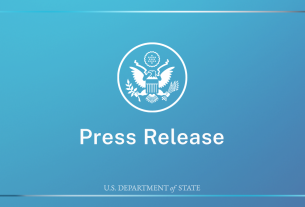In the absence of strong net neutrality protections, internet service providers (ISPs) have made all sorts of plans that would allow them to capitalize on something called “network slicing.” While this technology has all sorts of promise, what the ISPs have planned would subvert net neutrality—the principle that all data be treated equally by your service provider—by allowing them to recreate the kinds of “fast lanes” we’ve already agreed should not be allowed. If their plans succeed, then the new proposed net neutrality protections will end up doing far less for consumers than the old rules did.
The FCC released draft rules to reinstate net neutrality, with a vote on adopting the rules to come the 25th of April. Overall, the order is a great step for net neutrality. However, to be truly effective the rules must not preempt states from protecting their residents with stronger laws and clearly find the creation of “fast lanes” via positive discrimination and unpaid prioritization of specific applications or services are violations of net neutrality.
Fast Lanes and How They Could Harm Competition
Since “fast lanes” aren’t a technical term, what do we mean when we are talking about a fast lane? To understand, it is helpful to think about data traffic and internet networking infrastructure like car traffic and public road systems. As roads connect people, goods, and services across distances, so does network infrastructure allow for data traffic to flow from one place to another. And just as a road with more capacity in the way of more lanes theoretically means the road can support more traffic moving at speed, internet infrastructure with more “lanes” (i.e. bandwidth) should mean that a network can better support applications like streaming services and online gaming.
Individual ISPs have a maximum network capacity, and speed, of internet traffic they can handle. To continue the analogy, the road leading to your neighborhood has a set number of lanes. This is why the speed of your internet may change throughout the day. At peak hours your internet service may slow down because a slowdown has occurred from too much requested traffic clogging up the lanes.
It’s not inherently a bad thing to have specific lanes for certain types of traffic, actual fast lanes on freeways can improve congestion by not making faster moving vehicles compete for space with slower moving traffic, having exit and entry lanes in freeways also allows cars to perform specialized tasks without impeding other traffic. A lane only for buses isn’t a bad thing as long as every bus gets equal access to that lane and everyone has equal access to riding those buses. Where this becomes a problem is if there is a special lane only for Google buses, or for consuming entertainment content instead of participating in video calls. In these scenarios you would be increasing the quality of certain bus rides at the expense of degraded service for everyone else on the road.
An internet “fast lane” would be the designation of part of the network with more bandwidth and/or lower latency to only be used for certain services. On a technical level, the physical network infrastructure would be split amongst several different software defined networks with different use cases using network slicing. One network might be optimized for high bandwidth applications such as video streaming, another might be optimized for applications needing low latency (e.g. a short distance between the client and the server), and another might be optimized for IoT devices. The maximum physical network capacity is split among these slices. To continue our tortured metaphor, your original six lane general road is now a four lane general road with two lanes reserved for, say, a select list of streaming services. Think dedicated high speed lanes for Disney+, HBO, and Netflix, but those services only. In a network neutral construction of the infrastructure, all internet traffic shares all lanes, and no specific app or service is unfairly sped up or slowed down. This isn’t to say that we are inherently against network management techniques like quality of service or network slicing. But it’s important that quality of service efforts be undertaken, as much as possible, in an application agnostic manner.
The fast lanes metaphor isn’t ideal. On the road having fast lanes is a good thing, it can protect more slow and cautious drivers from dangerous driving and improve the flow of traffic. Bike lanes are a good thing because they make cyclists safer and allow cars to drive more quickly and not have to navigate around them. But with traffic lanes it’s the driver, not the road, that decides which lane they belong in (with penalties for doing obviously bad faith things such as driving in the bike lane.)
Internet service providers (ISPs) are already testing their ability to create these network slices. They already have plans of creating market offerings where certain applications and services, chosen by them, are given exclusive reserved fast lanes while the rest of the internet must shoulder their way through what is left. This kind of networking slicing is a violation of net neutrality. We aren’t against network slicing as a technology, it could be useful for things like remote surgery or vehicle to vehicle communication which requires low latency connections and is in the public interest, which are separate offerings and not part of the broadband services covered in the draft order. We are against network slicing being used as a loophole to circumvent principles of net neutrality.
Fast Lanes Are a Clear Violation of Net Neutrality
Where net neutrality is the principle that all ISPs should treat all legitimate traffic coming over their networks equally, discriminating between certain applications or types of traffic is a clear violation of that principle. When fast lanes speed up certain applications or certain classes of applications, they cannot do so without having a negative impact on other internet traffic, even if it’s just by comparison. This is throttling, plain and simple.
Further, because ISPs choose which applications or types of services get to be in the fast lane, they choose winners and losers within the internet, which has clear harms to both speech and competition. Whether your access to Disney+ is faster than your access to Indieflix because Disney+ is sped up or because Indieflix is slowed down doesn’t matter because the end result is the same: Disney+ is faster than Indieflix and so you are incentivized to use Disney+ over Indieflix.
ISPs should not be able to harm competition even by deciding to prioritize incumbent services over new ones, or that one political party’s website is faster than another’s. It is the consumer who should be in charge of what they do online. Fast lanes have no place in a network neutral internet.



